Welcome to our series on Design Thinking methods and activities. You’ll find a full list of posts in this series at the end of the page.

Card Sorting
Card sorting works by presenting participants with a set of pre-made cards and asking them to prioritize or organize them into groups. In the context of user research, you might be trying to understand what motivates a user most (or least). And for information architecture, you might want to see how a user might sort navigational items in groups to build-out an IA.
| Primary Goal | To quickly find out what matters most to users. |
| When To Use | When trying to understand the value(s) a product or feature provides and which is most important. This is a simple form of user research. |
| Time Required | On average, 1 hour. Add or subtract time depending on the breadth of the experience. |
| Number of Participants | 1 facilitator and 2+ sorters |
| Who Should Participate? | The people you are building the product, service, or feature for. |
| Supplies | Word cards, image cards, camera-enabled phone, somewhere to take notes (laptop, notebook, etc) |
This activity is so simple and recognizable (people have literally been card sorting for centuries!) that it’s a fun and easy one to spin up. However, know that though card sorting is a great high-level activity, it may not go deep enough when you’re trying to tackle very detailed workflows or IA structures. Use this when you’re attempting a first pass at understanding a problem.]
1. Examples for Setup
Because there are so many different ways to utilize and format this activity, I wanted to give you a few starter examples. Note that not all examples are related to a software applications. The beauty of this activity is that it can be used for anything from traditional UX research to planning your next family vacation.
Example 1: Discovering Motivators
Application: Retail Clothing App
Question to Participant: What features motivate you to to shop more in the app?
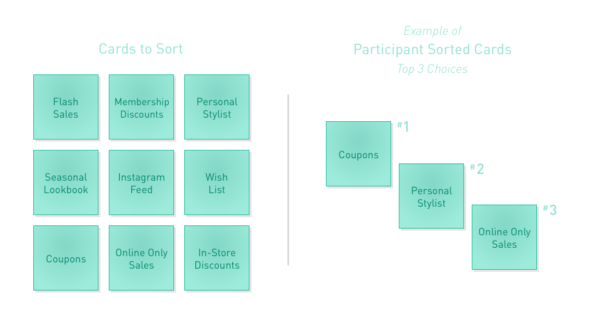
Example 2: Developing an IA
Application: College Marketing Site
Question to Participant: How would you group these navigational items together?
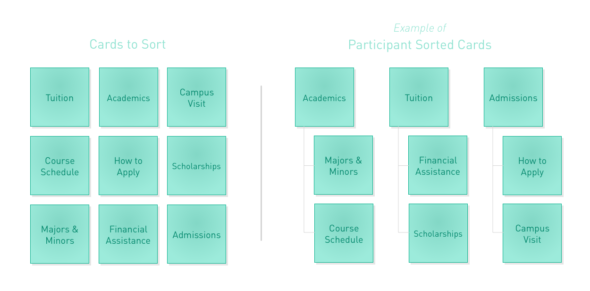
Example 3: Goal Alignment
Application: Parents Seeking New School for Child
Note on Setup: For this version you can have the participants group them into must-haves and nice-to-haves. Images are also a good substitute for an activity like this. It’s also interesting to note which cards the participant does not utilize which can be just as revealing as the ones they did choose.
Question to Participant: How would you group these navigational items together?
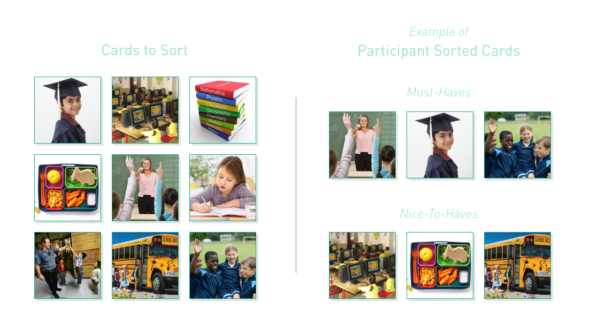
Example 4: Emotional Pairing
Application: Understanding Brand Alignment
Note on Setup: This activity pairs two sets of cards together. You’ll need an “emotions” set of cards (depicted below in the ever-recognizable emoji form) and a set of brands cards. Logos should suffice. Ensure you take great notes for this activity as some of the participant’s explanations will dive deep into strengths, weaknesses, and areas of opportunity for each brand.
Question to Participant: How do each of these brands make you feel?
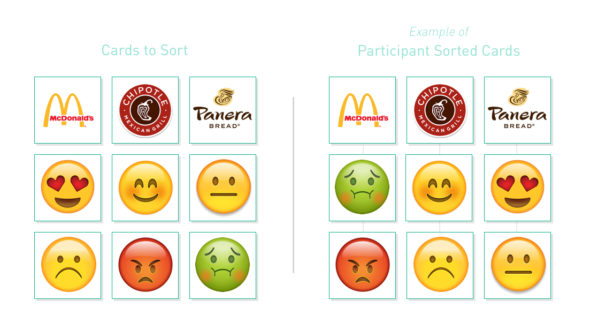
2. Synthesis
After you’ve had each participant sort cards, take all the findings and map them in a spreadsheet or matrix so common patterns and themes can be identified. After that’s finished you might find that a deeper dive needs to happen to pick apart sub-motivations, goals, and workflows.
And that’s how you sort! Check back soon for new lessons, and leave me a comment below and tell us how you utilize card sorting in your work.
Until next time!
Atomic’s Design Thinking Toolkit
- What Is Design Thinking?
- Your Design Thinking Supply List
- Activity 1 – The Love/Breakup Letter
- Activity 2 – Story Mapping
- Activity 3 – P.O.E.M.S.
- Activity 4 – Start Your Day
- Activity 5 – Remember the Future
- Activity 6 – Card Sorting
- Activity 7 – Competitors/Complementors Map
- Activity 8 – Difficulty & Importance Matrix
- Activity 9 – Rose, Bud, Thorn
- Activity 10 – Affinity Mapping
- Activity 11 – Speed Boat
- Activity 12 – Visualize The Vote
- Activity 13 – Hopes & Fears
- Activity 14 – I Like, I Wish, What If
- Activity 15 – How to Make Toast
- Activity 16 – How Might We…?
- Activity 17 – Alter Egos
- Activity 18 – What’s On Your Radar?
- Activity 19 – The Perfect Morning
- Activity 20 – 2×3
- Activity 21 – How Can I Help…?
- Activity 22 – Cover Story
- Activity 23 – Crazy 8s
- Activity 24 – Abstraction Ladder
- Activity 25 – Empathy Map
- Activity 26 – Worse Possible Idea
- Activity 27 – Pre-Project Survey
- Activity 28 – The Powers of Ten
- Activity 29 – SCAMPER
- Activity 30 – Design Studio
- Activity 31 – Forced Connections

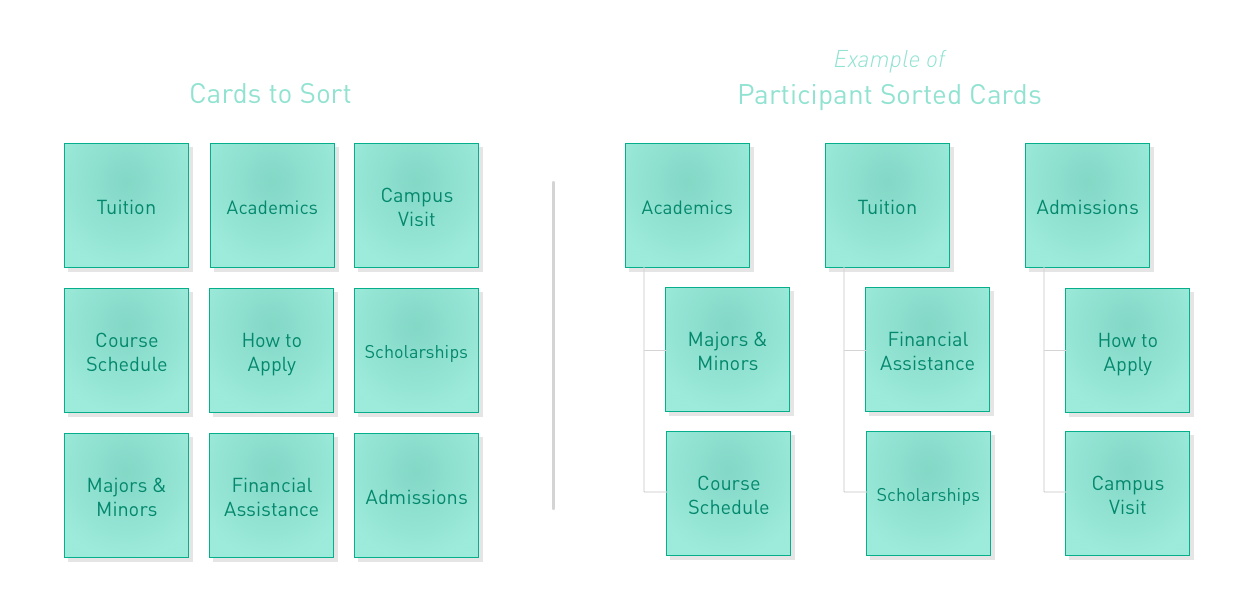
I never knew design thinking can be so much fun! Thanks for all the information here.
You’re very welcome. You’ve uncovered Design Thinking’s little secret… that it’s really fun! :)